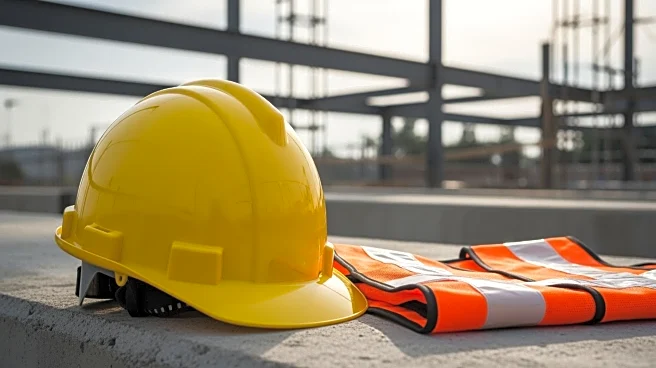What's Happening?
The Health and Safety Executive (HSE) reported that one in 40 construction workers in the UK sustained non-fatal injuries over the past three years. The construction sector remains the deadliest, with 35 workplace fatalities in 2024/25, accounting for
28% of all worker deaths. The injury rate in construction is higher than in manufacturing or transport, with falls from height being the most common cause. The industry also faces significant costs due to injury and ill health, amounting to £1.4 billion annually.
Why It's Important?
The high injury rates in the construction industry highlight ongoing safety challenges despite existing regulations. This situation underscores the need for enhanced safety measures and stricter enforcement to protect workers. The financial impact of injuries, including lost working days and compensation costs, affects the industry's productivity and profitability. Addressing these issues is crucial for improving worker safety and reducing economic losses.
What's Next?
The construction industry may need to adopt more rigorous safety protocols and invest in training to reduce injury rates. Regulatory bodies could consider revising safety standards and increasing inspections to ensure compliance. The industry might also explore technological solutions, such as wearable safety devices and automated systems, to enhance worker protection. Collaboration between industry stakeholders and government agencies will be essential to implement effective safety measures.
Beyond the Headlines
The persistent safety issues in construction raise ethical concerns about worker welfare and the industry's responsibility to provide a safe working environment. The high injury rates may also impact the industry's ability to attract and retain skilled workers, potentially leading to labor shortages. Long-term solutions will require a cultural shift towards prioritizing safety and health in all aspects of construction work.














